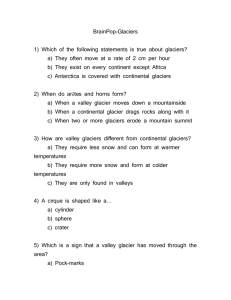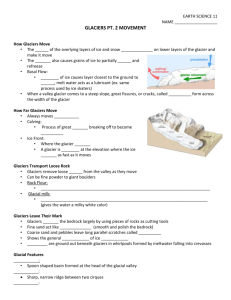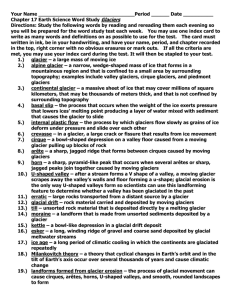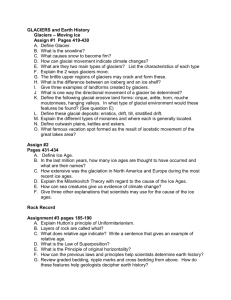Earth Science
advertisement
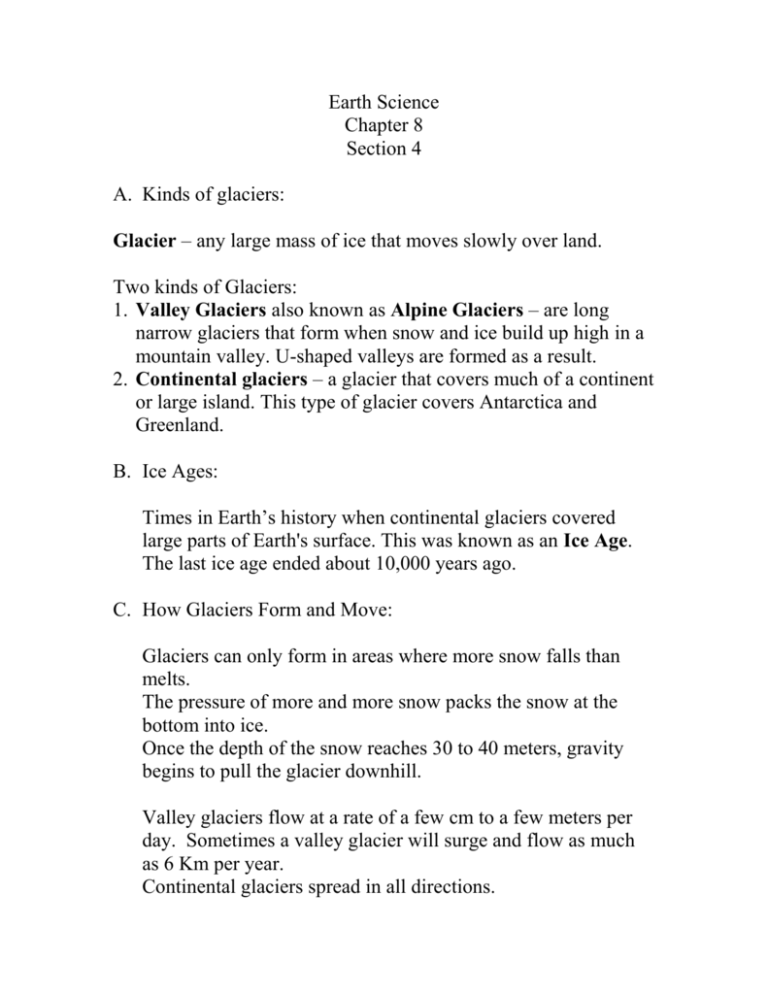
Earth Science Chapter 8 Section 4 A. Kinds of glaciers: Glacier – any large mass of ice that moves slowly over land. Two kinds of Glaciers: 1. Valley Glaciers also known as Alpine Glaciers – are long narrow glaciers that form when snow and ice build up high in a mountain valley. U-shaped valleys are formed as a result. 2. Continental glaciers – a glacier that covers much of a continent or large island. This type of glacier covers Antarctica and Greenland. B. Ice Ages: Times in Earth’s history when continental glaciers covered large parts of Earth's surface. This was known as an Ice Age. The last ice age ended about 10,000 years ago. C. How Glaciers Form and Move: Glaciers can only form in areas where more snow falls than melts. The pressure of more and more snow packs the snow at the bottom into ice. Once the depth of the snow reaches 30 to 40 meters, gravity begins to pull the glacier downhill. Valley glaciers flow at a rate of a few cm to a few meters per day. Sometimes a valley glacier will surge and flow as much as 6 Km per year. Continental glaciers spread in all directions. D. Glacial Erosion: The movement of a glacier changes the land below it. Two processes by which glaciers erode the land are: 1. Plucking – The weight of the ice breaks rocks apart. The rock fragments freeze to the bottom of the glacier and are carried away. 2. Abrasion – Rock fragments remain on the bottom of the ice, and the glacier drags them across the land. This process gouges and scratches the bedrock. E. Glacial Deposition: A glacier gathers a huge amount of rock and soil as it erodes the land in its path. When a glacier melts, it deposits the sediment it eroded from the land, creating various landforms. The mixture of sediments that a glacier deposits directly on the surface is called till. Till is made up of different sized particles such as, clay, silt, sand, gravel and boulders. Till deposited at the edges of a glacier are called (lateral) moraines. A terminal moraine is a deposit or till at the farthest point reached by the glacier. Long Island, NY is an example. A kettle is a deposition feature left behind when a piece of ice is left behind in glacial till. When the ice melt kettle (kettle shaped hole) remains. These kettles fill with water forming kettle lakes. Continental glaciers formed the Great Lakes. Advancing ice scooped out soil and soft rock leaving the deep basins, melting ice filled the basins forming the Great Lakes. F. Glacial Landforms: See diagram:




